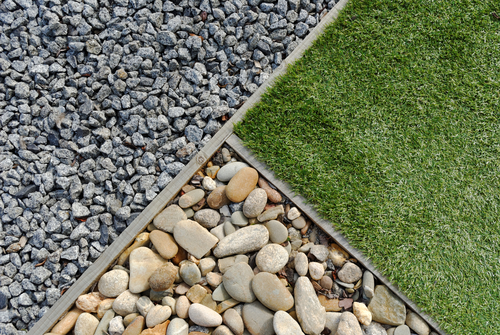The typical American yard has undergone significant changes in recent years. No longer content with traditional lawns and cookie-cutter landscape designs, modern homeowners are forging brave new trails and creating their own trends based on their own individual needs an preferences. Following are just five of the exciting new landscaping developments that you’ll see in abundance in 2017.
Wildlife Habitat
One of 2107s biggest landscape trends will be establishing wildlife habitat in urban and suburban backyard spaces. Homeowners are planting vegetation that provides area wildlife with both nesting habitat, general shelter, food, and water. For instance, many modern water features are designed with the needs of avian life in mind. Those who have acreage are choosing to leave the areas around the edges of their property uncultivated in order to provide habitat for larger forms of wildlife such as deer, foxes, and raccoons.
Outdoor Kitchens
More and more homeowners are realizing the potential of outdoor kitchens. They can be used for family cookouts, neighborhood gatherings, or just inviting a few friends over on a lazy Sunday afternoon. They allow families to entertain and cook for a large group without creating a mess inside the home. Due to these advantages, many families are designing custom outdoor grill island setups.
Fire Resistance
Certain landscaping techniques can significantly reduce the risk of damage to the home by wildfire activity. Evergreen trees for instance, contain flammable sap and should be planted at least 30 feet away from homes and other structures for optimal fire safety. Delicious hardwood trees and shrubs burn more slowly than other vegetation, and those living in areas where seasonal wildfires pose a threat often create a 6-foot space around their homes made of decorative concrete.
Water Features
Modern water features recycle water throughout their systems, making them attractive options to those who like the appearance and sound of outdoor waterfalls and pools but not the high sticker price of increased water usage.
Edible Landscaping
It used to be against municipal and county codes in many areas to grow food in your front yard, but 2017 promises to blow that restriction right out of the water. Strawberries make excellent ground cover, and their flowers provide a profuse floral display in spring — many people will be planting small strawberry patches in their front yards in 2017. For those who want to cultivate a home orchard, all standard varieties of fruit trees are available in miniature sizes to accommodate today’s smaller yards. As an added bonus, the fruit of these trees is easily picked without the use of ladders. Even though they don’t produce as much fruit as their standard counterparts, their yield is more than adequate for the needs of today’s smaller families — and few things are more attractive in home landscaping than trees laden with ripe, healthy fruits. Fruit trees also provide abundant spring flowers. Other edible landscaping options that provide optimal visual appeal are cherry tomatoes grown in hanging baskets, rows of sunflowers, kale, various chives, and chard. You can’t beat an old-school grape arbor for backyard elegance, and training raspberries up around a fence provides a great way to combine form with function — raspberries are visually beautiful fruits that provide optimal taste and nutrition for the family table.
Less Lawn Space
Lush expanses of velvety green lawns were once a staple of American landscaping. Even if the ideal lawn was never quite attained, homeowners spent hours every weekend lawn mowing, weeding, trimming, fertilizing, and otherwise trying to fuss the perfect lawn into existence. However, large lawns are on the wane for a number of reasons. Water conscious consumers are looking for drought-friendly alternatives, while others are simply tired of the time and costs involved in maintaining a lawn. Easy-care ground covers such as clover and Corsican mint and rock gardens have taken the place of labor-and rescue intensive lawns.
If you have further questions concerning landscaping options and strategies for 2017. please don’t hesitate to contact us at your earliest convenience so that we can be of assistance.
